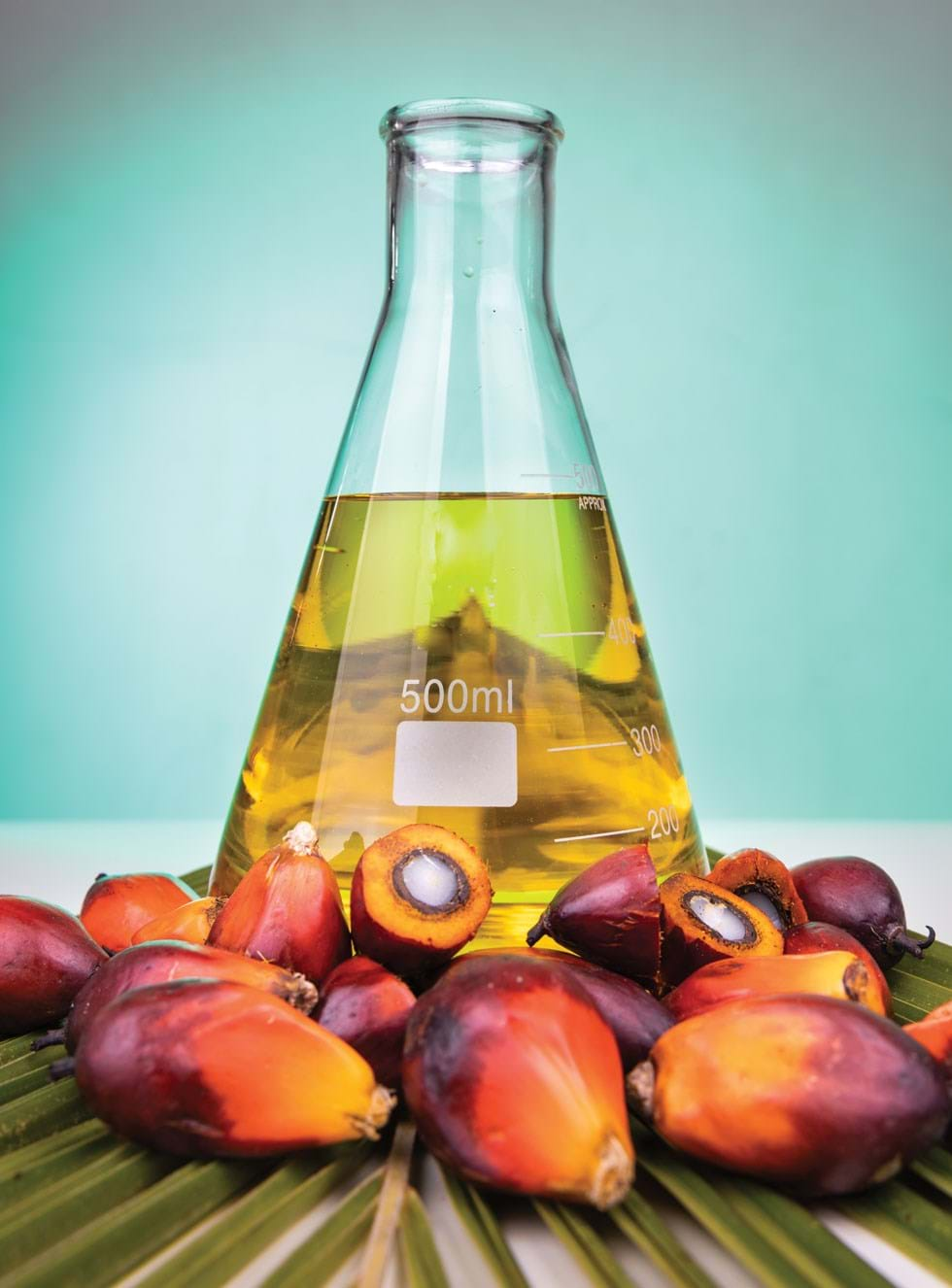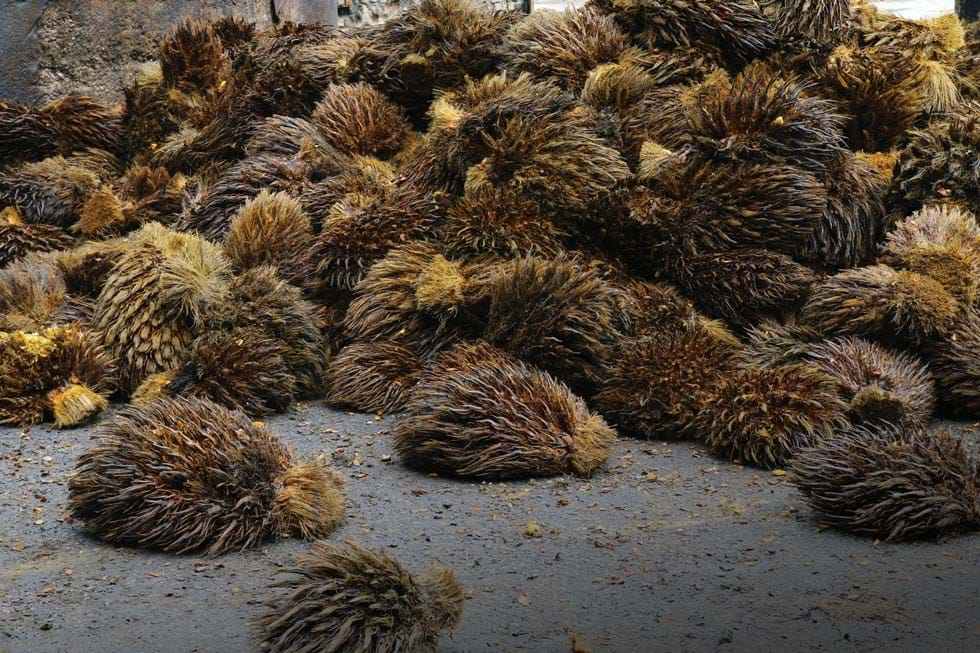Sharing the Secrets of Greener Palm Oil
Adam Duckett interviews researchers working to optimise the palm oil sector
I’VE ASKED a lot of chemical engineers what inspired them to study the subject. Do they recall the moment they realised they wanted to join the profession? For Bing Shen How, part of a large community of researchers looking to improve the environmental performance of Malaysia’s massive palm oil industry, it was a sliding doors moment. He enrolled at university to study mechanical engineering yet found himself attending the induction for chemical engineers.
“I started to realise I wanted to be the person that builds the process,” he says. “I think other engineers can change the world as well but from my perspective the process is at the heart of all the changes. It’s very important.”
He soon found himself in the head of school’s office asking if he could switch courses.
“If I had decided not to go to that induction, my life would be totally different.”

All about the networks
How is now a senior lecturer at Swinburne University of Technology in Sarawak where he teaches process plant design and supervises postgraduates focused on the circular economy, the use of biomass, and optimising supply chains. For his own research he’s been collaborating with what he describes as hardcore mathematicians in Hungary. He is helping them develop software that industrial process designers can use to optimise heat exchanger networks (doi.org/mgzk). He has also modelled what the optimal industrial networks in Pensinsula Malaysia might look like if there was a concerted effort to get the methane produced at palm oil mills and landfill to industrial users (doi.org/mgzm).
In 2022, he co-authored an article published in IChemE’s Chemical Engineering Research and Design journal that pinpointed future technologies that might help chemical engineering improve the sustainability of the palm oil industry (doi.org/gstmdf). This included the use of AI for identifying new catalysts, drones for real-time monitoring of plantations, and blockchain technology to help track supplies of sustainably certified palm oil.
While How is enthusiastic about these possibilities he says the Malaysian palm oil industry is not ready to embrace them yet.
“Maybe AI is the step after the next step,” he says. “The first step would be using some of the technologies that are already available to help the decarbonisation.”
Industry is making use of emission abatement technologies and using its own biomass byproducts to power its operations but there are proven technologies including pyrolysis and gasification that are not being widely used, he says.
“In the palm oil industry, the uptake is low and one of the reasons is because there is no urgency to do it and that’s why we just remain at the status quo.”
A boost from briquetting
Jaya Prasanth Rajakal, a postdoctoral research fellow at Sunway University, has been working on a project with the Malaysian Palm Oil Council (MPOC) on how technologies including pyrolysis and gasification could help sections of the industry reach net zero.
“The total emissions for producing a tonne of crude palm oil is around 3,580 kg of CO2,” he says.
The analysis found that the plantations and mills can reduce those emissions by around 70% by using mulched fronds as fertiliser, burning fibre and kernel shells for power and steam, and producing biomethane from mill effluent. Producing briquettes from unused waste biomass and burning them to produce power could cut the remaining 30% and push operators into negative emissions, he says.
“Most of the EFB – the empty fruit bunches – which is a major biomass source is not properly being utilised.”

The Malaysia government’s National Biomass Action Plan, published last year, reported that just 50% of EFBs are being used and it is keen for operators across the supply chain to form biomass clusters (https://bit.ly/4bzSWmV).
Rajakal says if EFBs were briquetted, it could cut emissions to -570 kg per ton of crude palm oil.
“We would be exceeding net zero or carbon neutrality by 11%.”
Again, this technology is already widely adopted in other biomass industries.
“The challenge is that EFB has a very high moisture content. So, we need some pretreatment to reduce the moisture content before sending it to briquette processing. So, the technology is available it’s just figuring out a business model or a way to scale the entire process and make a profitable venture.”
The challenges are compounded by the fact that small operators including independent smallholders and cooperatives manage 26% of Malaysia’s palm oil producing land. They need government support to adopt these technologies, he says.
The total emissions for producing a tonne of crude palm oil is around 3,580 kg of CO2
Share the success
How agrees that helping small-scale operations understand the technologies that can assist them in reducing their emissions is an important opportunity for Malaysia’s chemical engineering community. He knows that won’t simply come from them reading research papers in peer-reviewed journals, however.
“We cannot just show them the papers. We need to transfer this into something easier to digest for the layman. And we cannot just publish it on the net. We need to walk into their communities, talk to them and let them see that there is a successful solution. That there is a success story.”
He’d also like to see industry sharing more. “A lot of industry in this part of the world, we are still very defensive…I may tell you that I’m generating biogas, I’m generating bio oil, I’m generating jet fuel. But the detail I will not tell you.”
If we want to accelerate towards greener production, he says industry needs to break the habit.
“You don’t need to share all the secrets, but you need to tell others what are the available technologies or the technologies that you are exploring. And also share the success. Don’t keep the success to yourself.”
Research goals
Looking to the future, what personal ambitions do each of the researchers have when it comes to improving the sustainability of industry? Rajakal wants to investigate how the palm oil industry can help decarbonise other sectors in the economy, including hard to abate manufacturers.
“For example, palm oil mills can produce green hydrogen. Cement and steel industries produce significant CO2. So how do we integrate the process, use the green hydrogen, use the CO2 and produce e-methanol? How do we retrofit the steel and cement industries? They could replace coal with e-methanol.
“This is something that I’m looking at. How do we transition different industries towards carbon neutrality.”
How hopes his work can help policymakers support the palm oil sector and adopt the technologies and strategies available to push towards net zero.
“Then, for the next step we can look at how we further enhance efficiency and make it even more profitable. Not only sustainable in the sense of environmental but also economic and social.”
Recent Editions
Catch up on the latest news, views and jobs from The Chemical Engineer. Below are the four latest issues. View a wider selection of the archive from within the Magazine section of this site.




